Mexico City. Densely populated city of
contradictions. Stunning buildings adorned with tiles, beautiful
wrought ironwork, stone carvings. Art deco houses sprinkled liberally
throughout the suburbs; huge, evocative murals on municipal
buildings; tiled explanations of the etymology of suburb or street
names peppered throughout the city. Street vendors on every corner,
aggressive restaurant touts and security guards outside any
respectable store. Delicious Mexican cuisine, from fine dining to
cheapo street food. Crazy drivers, kamikaze buses, no respect for
road rules. Such a huge leap from my experiences in the USA, but
after four months I was ready for the change.
I had planned to spend some time
outside of the capital (locally called 'DF', for 'Distrito Federal')
but as my friend Paul had generously agreed to let me stay in his
spare room I was lured by the promise of free accommodation and
stayed in DF for my entire two weeks. Not that I was short of things
to do: it's a huge city with a staggeringly large population of 22
million (yes, equal to that of the entire country of Australia!) and
dense built-up urban areas. Paul and his partner Gerardo live in La
Condesa, a funky suburb replete with cafes, bars, fashionable stores
and tree-lined avenues, reminiscent of Potts Point or Surry Hills.
Their home is also home to four adorable stray kittens, Cuautemoc,
Diego, Simon and Matteo, who were wary of me at first but eventually
agreed to hang out and play.
La Condesa building
Loved the lettering on top of this building
My place for 2 weeks!
Paulo y los gatitos
View up from their courtyard
View from the other courtyard
Cats lounging in the courtyard
Lounging in the courtyard
Gerardo in the cafe
Tree 1: Pavement 0
Traditional barber
Car & unusual carport
Roof art
Street seller dicing with death
The boys welcomed me to the city with a
meal at their favourite restaurant, with Paul and I enjoying
cocktails in a rooftop bar beforehand. He left Sydney five years ago
so we had lots to catch up on! Gerardo is from Mexico City so it was
interesting hearing his views about Mexican history and contemporary
politics. Paul works as a journalist for Reuters and covers the whole
of Latin America so his knowledge of local politics and culture is
robust and detailed. I really enjoyed our conversations during my
stay.
Stunning rhubarb crumble
My primary goal during these two weeks
was to brush up on my Spanish enough to be more confident once I
reached South America. The local International House had free Spanish
lessons four times a week for Intermediate learners (for the benefit
of their Mexican students gaining Spanish teaching qualifications). I
signed up immediately and structured my time around the lessons. I
also made sure I played on Duolingo for at least an hour a day (this
is a wonderful language learning app which gamifies the learning of
languages and is lots of fun). And I listened to my Collins 'Teach
Yourself Spanish' audio course while doing my morning runs or walks.
I felt as though this was an intensive enough approach! Despite my
extensive lessons I still committed many faux pas while out and
about. The one which makes me cringe the most was when in a cafe
after having eaten a delicious breakfast, the waiter came up and
asked me if everything had been okay. Without taking the time to
mentally translate what he had said I assumed he was asking me if I
wanted anything else. I emphatically said 'no' and shook my head, and
only realised my mistake as he walked away in despair. Oh well, it
will get better!
Between the lessons I managed to see a
lot of different aspects of the city, and life here in Mexico. Paul
took me out to see the Pyramids at Teotihuacan, stunning Mesoamerican
ruins which cover a vast area of land outside the city. We rode on a
bus for about an hour, past the barrios of Mexico, brightly-painted
square stone houses covering the hills outside the city. Apparently
these houses are illegal but there are so few places for these people
to go, the government turns a blind eye. Although I know life in the
barrios is very basic and people often have to go without water, I
found these slums strangely beautiful to look at, probably because so
many of them had painted them bright blue, or pink, or yellow. The
pyramids were my first experience of the impact of being at this
altitude. We are at 7,945 feet here, and I'm shocked at how fatigued
it is making me feel. I was out of breath after only walking up one
flight of stairs, and I feel as though I need a deep sleep at around
3pm every day! It's also making me very thirsty all the time.
Hopefully I will get used to it before I arrive in Cusco for the Inca
trek.
The plinths, on which once stood temples or houses of wealthy residents
These stairs nearly killed me!
Some of the residential ruins
Original stone carvings
Pyramid of the Sun
With my host, Paulo!
Looking down to the Temple of the Moon
Teotihuacan is believed to have been
established around 100 BCE, and at one time it was
the largest city in pre-Columbian America, with around 125,000
inhabitants. The remains are the most-visited archaeological site in
Mexico. The Pyramid of the Sun is the third largest pyramid in the
world, and it sits on the city's broad central road, named the
'Avenue of the Dead' by the Aztecs, because they assumed the
ceremonial plinths lining the road were for tombs. Recent
archaeological theories claim they were more likely for ceremonial
purposes. There are several other temples, smaller, residential ruins
and market squares. The city's urban grid is aligned to precisely
15.5 degrees east of North. One theory is that this is because the
sun rose at that same angle during the same summer day each year.
Settlers used the alignment to calibrate their sense of time or as a
marker for planting crops or performing certain rituals.
Remaining stones still show in
part how colourful the city must have been when in its full glory.
Once we'd finally made our way to the top the views were spectacular.
Well worth the battle with altitude sickness!
Paul at the summit
On Saturdays there is an artisans
market in a lovely suburb called San Angel, filled with cobbled
streets and old colonial buildings. Working on the assumption it
would be like markets back home in Sydney I was up and out straight
after breakfast to make my way by train to the suburb. I had thought
I would arrive when the market was in full swing, but no, at 11am
they were only just setting up. Yes, I need to learn about 'Mexican
time'. Things are different here. The markets were really interesting
and I loved the innovation and beauty of the paintings and arts and
crafts there. Once again, if my budget and luggage allowance weren't
so meagre I would have loved a few of these beautiful things for my
future home. But I resisted, instead taking ideas and enjoying
browsing round the many stalls and soaking up the atmosphere. After a
while I made it round some of the little streets to see the houses –
predominantly large, smart colonial houses Spanish-influenced in
style. Many of them had large front gates and were built round pretty
internal courtyards. I followed my nose and came to a small park
where I spent a while reading my book on a bench, observed only by
the geckos and hummingbirds which also explored the park. A very
tranquil day.
San Angel market stalls
Religious iconography on buildings
Angels on buildings
My lovey bench for the arvo
Cute bike park
Flame trees! Home from home
A visit to Mexico City is not complete
without a pilgrimage to the house and studio of Frida Kahlo, perhaps
its most famous artist. She lived in The Blue House (La Casa Azul)
with her partner Diego Rivera, locally an extremely famous muralist
and painter but I don't think as renowned internationally. Their
house was wonderful, with interesting photos and historical art on
the wall, a great collection of Mexican Folk Art and a well-appointed
(for its time) kitchen. Upstairs was Frida's studio, with the paints
and brushes laid out as they were just before she died. It was
fascinating to see her easel and the view she had while painting.
They also had an extensive book collection and many sculptures from
local artists. Frida had a 'day bed' where she rested during the day (and on which she passed away),
and then her own bedroom next door. The view from her day bed was of
their lovely garden, filled with plants and sculptures and which gave
her studio so much light. I would love to have a 'day bed' like this
in my life one day.
One of Frida's puppet theatres
The woman herself
Frida's studio
Frida's paints
Frida's ashes are in the brown urn
Sculpture in the garden
Dedication by Patti Smith
Frida as a young girl
Frida had suffered from a number of
ailments and accidents in her life which left her wearing a body
brace and with one leg much shorter than the other. She was bed-bound
and ill for much of her life but didn't let it stop her creativity. I
loved reading about her attitude and her feistiness: what a
character. And of course her art is incredible – but sometimes
knowing more about the story behind the artist can really enhance
one's appreciation of their art.
Frida and Diego had housed Leon Trotsky
when he fled Lenin to Mexico City in the 1930s, so I popped around
the corner to the Trotsky Museum, in a house in which Trotsky had
also lived while in exile here, and in which he was murdered. This
museum really tested my Spanish as most of the signs were only in one
language, but I picked up enough to understand the story. The house
was almost perfectly as he had left it, with his toothpaste and soap
in the bathroom, his bed still made, his study and the office all
featuring the elements used for him to still write while in exile.
The windows were bricked up half way for his safety, with the most
exposed side of the house bricked up entirely. His desk was as he had
left it, when he was struck in the head from behind with an axe.
Shocking!
Trotsky with Frida and Diego
A young Trotsky
He drank Twinings tea!
The work room in his house. Note the half bricked up window on the left
Trotsky's bathroom
Trotsky's bedroom
His desk, where he was killed
In my first week in DF I met a girl
called Julieta who was carrying out some research for a potential
business she's thinking of setting up, to run bicycle tours round
Mexico City. We got on so well we decided to hang out a couple of
times while I was in town. One day she took me by bus to the
University so I could see the library mural by Juan O'Gorman, and we
ventured to the MUAC contemporary art museum for some fascinating
exhibitions by Mexican artists. We also explored the Polyforum, an
auditorium in the city which features a huge three-dimensional mural
by David Alfaro Siqueiros, called 'La Marcha de la Humanidad'. The
faces in the mural were expressive: anguished, exultant, ardent. The
huge hands at either end of the auditorium stretched out ambiguously,
as if either begging or offering something to you. Julieta told me
she had seen the Stone Roses here only a few months previously and I
could imagine them playing in a venue such as this. I loved it.
Outside of the Polyforum with the World Trade Center in the background
Mural inside. Hard to convey the 3D nature but it's amazing.
Juan O'Gorman mural at the university
Want this table!
Want this clock!
Another place I explored and loved was
Chapultepec castle, a beautiful castle on a hill in a huge
centrally-located park. 'Chapultepec' stems from the Nahuatl word
'chapoltepec' which means 'on the grasshopper's hill'. There were
several tributes to grasshoppers in the castle, including stained
glass windows and a garden fountain. This beautiful castle was used
in Baz Luhrmann's film of Romeo and Juliet, as were several other
locations I visited in the city.
Tribute to Los Heroes Ninos
Gates of Chapultepec
Guarding Chapultepec
Mexico: old and new
Murals in Chapultepec
Old London-Mexico bank notes
Grumpy soldier
Amazing ceiling mural
Staircase
Cuautemoc, the final Indigenous Mexican chief
The Virgin of Guadalupe
More murals
Castle exterior
Beautiful stained glass windows
Carriage
Fountain
Carriage details
The terrace
View from the terrace
View from the terrace
Dining room
Light fitting
Beautiful tiles
View over the city
Grasshopper fountain
Lazy lion
Grasshopper window
Manicured gardens
Beautiful windows
Mexico city is equipped with an easily
navigable and efficient transport system – I enjoyed taking both
the train and the metrobus. 1.6 billion people take the metro train
each year. Interestingly it has sections of the platform and train
for women and children only. The metrobus had its own lane on the
hectic roads so it could sail past the traffic jams. My favourite
thing about the train was that each station had its own little logo,
usually related to something in that area, so it was really easy for
a newbie with limited language skills to navigate. The logo for
Chapultepec was, you guessed it, a grasshopper. I think Sydney's rail
and bus network planners could learn a lot from the Mexico City
transport system! It's good that the city has such impressive public
transport because the roads are crazy. Car drivers are a law unto
themselves: apparently there is no driving test here, you just have
to apply for a licence and you get it, a fact which is immediately
apparent as a pedestrian. Parking is also kamikaze, and after the
calmness of North American roads the reality of Mexican traffic was a
rude awakening. Despite my increased confidence as a driver I don't
think I would like to be behind the wheel here in DF.
I also headed into the main downtown
area one day, to Zocalo. This is where the huge palace and ornate
cathedral are, on two sides of the main city square. The buildings
round here were incredibly impressive – built over the original
Aztec temples and city of course. Here I visited the Palace of Bellas
Artes where I saw an interesting exhibition of the work of French
photographer Robert Doisneau. I also spent a few wonderful hours in a
marvellously-curated exhibition of the history of Mexico City
architecture, from 1900 to 2010. It was great to see the original
plans of buildings I had already seen, and to see photos of buildings
I wanted to see. There were also some fantastic examples of product
design and town planning, such as bicycle stands which I had seen
peppered throughout the city. It certainly gave me lots of
inspiration. I also wandered into a myriad of churches and saw heaps
of opulent gold altars and over-the-top gruesome statues.
The hotel which the Grand Budapest Hotel was based on?
Divine ceiling
Hotel bellboy
Foyer parrots
Palace des Bellas Artes
Very art deco interior
Art Deco light
Tiling
I spent a great few hours on this terrace
Gorgeous courtyard
Tiaras
The cathedral
In the centre of the city round the
back of the palace was my first experience of how full-on the Mexican
street vendors can be. The streets were lined with people selling
anything and everything they could, some with just a blanket on the
floor and a few simple, shoddy old items they desperately wanted to
sell. Others had a more professional-looking outfit, with handwritten
signs of texter on fluro card, advertising bras and undies for 10
soles. I walked up and down the streets marvelling at everything.
Tiaras and ballgowns do a surprisingly good trade, and you could
probably get a knocked-off version of any brand you like while you
were here.
Street vendors
Amusing store name
C&A!
The Cathedral at dusk
Looking out to the palace at dusk
Awesome building typography
Mexico City rental bikes
After travelling in the USA for four
months there were certainly aspects of life in Mexico City which came
as a culture shock. For example there really is an incredible gulf
between the rich and the poor, which is apparent every day. Although
I was staying in a 'nice' suburb, people all over the city were
constantly trying to sell me things, all sorts of things, in order to
make a living. Incredibly resourceful people exploiting any
opportunity to make a buck, but clearly in great need of this income
as they don't have a lot of choice. On the trains people would walk
up and down announcing in their monotone voices what wares they had
that day, selling things like batteries, chewing gum, recipe books.
It was my first experience of the very clear divide between different
races and social classes within the country and it's something which
played on my mind a lot while I was there, not least because I was
reading Chimamanda Ngozi Adichie's 'Americanah' at the time, which
deals with the theme of race in the USA. I felt so conspicuous being
white, made super-aware of it for probably the first time in my life,
and wished I could escape what I felt to be the erroneous cultural
signifiers my skin colour automatically gave off.
There were other culturally interesting
things about Mexico City. The rubbish (trash) gets picked up at
indiscriminate times each day, with the garbage man calling out upon
arrival and people hastily dashing out of their homes with their
rubbish bags. Another daily ritual was the woman who roamed the
streets on the back of her large van, calling out 'we buy mattresses,
we buy furniture' etc. Goodness knows if she ever made any business,
but her voice was irritatingly monotone.
Etymology tiling
Local juice bar guys
Sneaky photo of lamps I want
Tiles: want!
Windows: want!
Ceiling light: want!
Interesting cafe
More tiles
More etymology
Love!
Pavement carving
More etymology tiles
On my last full day in the city my new
friend Julieta and her friend Blue took me on a bicycle tour of the
city. Riding round DF is not for the faint-hearted, as the roads are
filled with noisy, hurried, contemptuous car drivers for whom road
rules seem to be optional. Luckily my time commuting in Sydney and
London prepared me somewhat for the experience (or at least made me
more confident to deal with it!). Blue led the way as he knows the
city like the back of his hand and we sped through some lovely
suburbs, Polanco, Las Lomas, Carcamo. They took me back to the
Chapultepec park but to a section I had not seen, where large round
plateaus each featured a spired building and were circled by stone
carvings of serpents. We stopped off at a beautiful tiled sculpture
by Diego Rivera and Juan O'Gorman in a pool of water, of a man sowing
seeds, best viewed from the air. Rivera had also created huge murals
in a building nearby telling the story of water and how it gives us
life. To be honest I'm not crazy about his painting style (probably a
controversial opinion in this part of the world but there you go) but
his subject matter is always interesting.
Snakes
Agua: a constant issue in Mexico City
Sculpture
Diego Rivera mural
Rivera mural
Sculpture
The army on their training
Riding along
Tyres!
We stumbled upon these old people dancing
More dancers
We then rode over to a huge market
called Mercado San Juan, where all manner of things could be
purchased. In true Mexican style the place was chaos and we wheeled
our bikes through the narrow lanes in the market, oggling at the
seafood, strange meats, fruit and veg and all manner of produce.
There were also adjacent markets for different kinds of wares. We
stopped off for some traditional Spanish meats, bread and sangria to
give us sustenance for the rest of our ride. Blue had no English and
my Spanish is of course pretty basic so Julieta did a great job
translating between us all day. Although of course it's astonishing
what information hand gestures and intonation can convey.
Mercado San Juan
There's even a shrine at the Mercado
My bike buddies
Con Julieta
Gruesome church door
Jesus and his crown of thorns
Bike wall
Mexican family TV show mural
This cafe owner loves bikes
Virgin of Guadalupe with bike chains
Hospital del Jesus
Check out the mariachis
Jesus graffiti
Water seller
Bandstand
Squat
We bumped into a couple of chefs in
their whites, fresh from a Guinness World Record attempt of the
highest number of chefs in any one place, which we'd cycled past
earlier. They obligingly posed for a photo.
Guinness world record chefs!
I returned back to La Condesa very
happy, although a little sunburnt! This 'two-hour' bike ride which I
had thought would be 10am-12pm actually finished at 6pm, we had been
enjoying ourselves so much. Clearly I'm getting used to being on
Mexican Time.
I committed another travel #fail while
in Mexico City, but luckily it didn't end up in disaster. My daily
rituals included a jog around the hippodrome in La Condesa and
lounging at one of the local cafes which had free WIFI. On one such
day I accidentally left my phone on top of the paper dispenser in the
cafe toilet. The perils of keeping one's phone in one's jeans pocket!
I noticed about half an hour later but by the time I dashed back to
the cafe it wasn't there. My heart missed a beat and I asked the
waiter in my broken Spanish if anyone had handed in a phone. He
explained that a couple had found the phone but taken it with them,
leaving their phone number behind. This seemed remarkably strange
thing to do, but I duly called the number and ended up speaking with
a guy whose English was pretty good. He explained that he worked
around the corner and his female colleague who had found the phone in
the toilet now had the phone. She had gone home for the day but I
could go into their work place the following day and retrieve my
phone. I was so grateful, and he explained that he would never hand a
phone in at a cafe or anywhere as you can't trust the people who
worked there. I thought this a little odd but when I got home Paul
explained that he would act in the same way. The disparity of wages
is such that my phone is probably worth more than two months' salary
to someone working in a cafe. Apparently even the security guards and
police are not to be trusted! Anyway, long story short, the girl
forgot the phone the next day, which was Friday, and I was due to fly
out of Mexico on the following Monday. Luckily she remembered the
phone when I went back on the Monday, and I got it back only a couple
of hours before leaving the country! Another lesson learnt.
Avenida Amsterdam, the hippodrome
My daily jogging track
After a thoroughly enjoyable couple of
weeks I bid farewell to my wonderful hosts and packed up for Peru.
Mexico City was definitely a great stepping stone from the USA to
South America in many ways, and I left feeling rested, well
looked-after and much more confident about my Spanish.
Postscript: coming from a secular
society I was astonished at just how many open examples of
Catholicism there are in Mexico: a very Catholic country. I started
to collect photos of the Virgin of Guadalupe and shrines which I saw
in the streets. Here are just a few of my favourites.

















































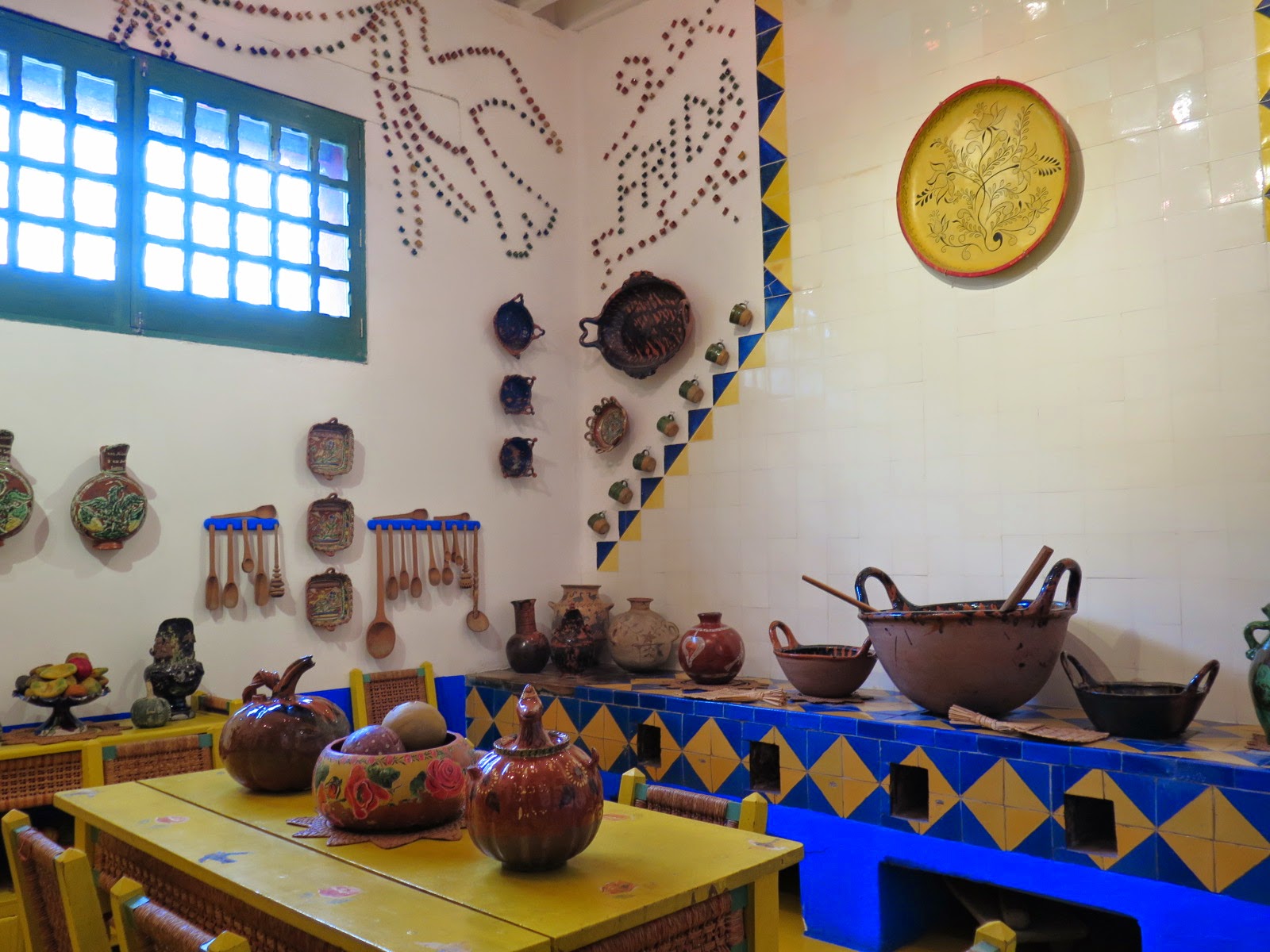
















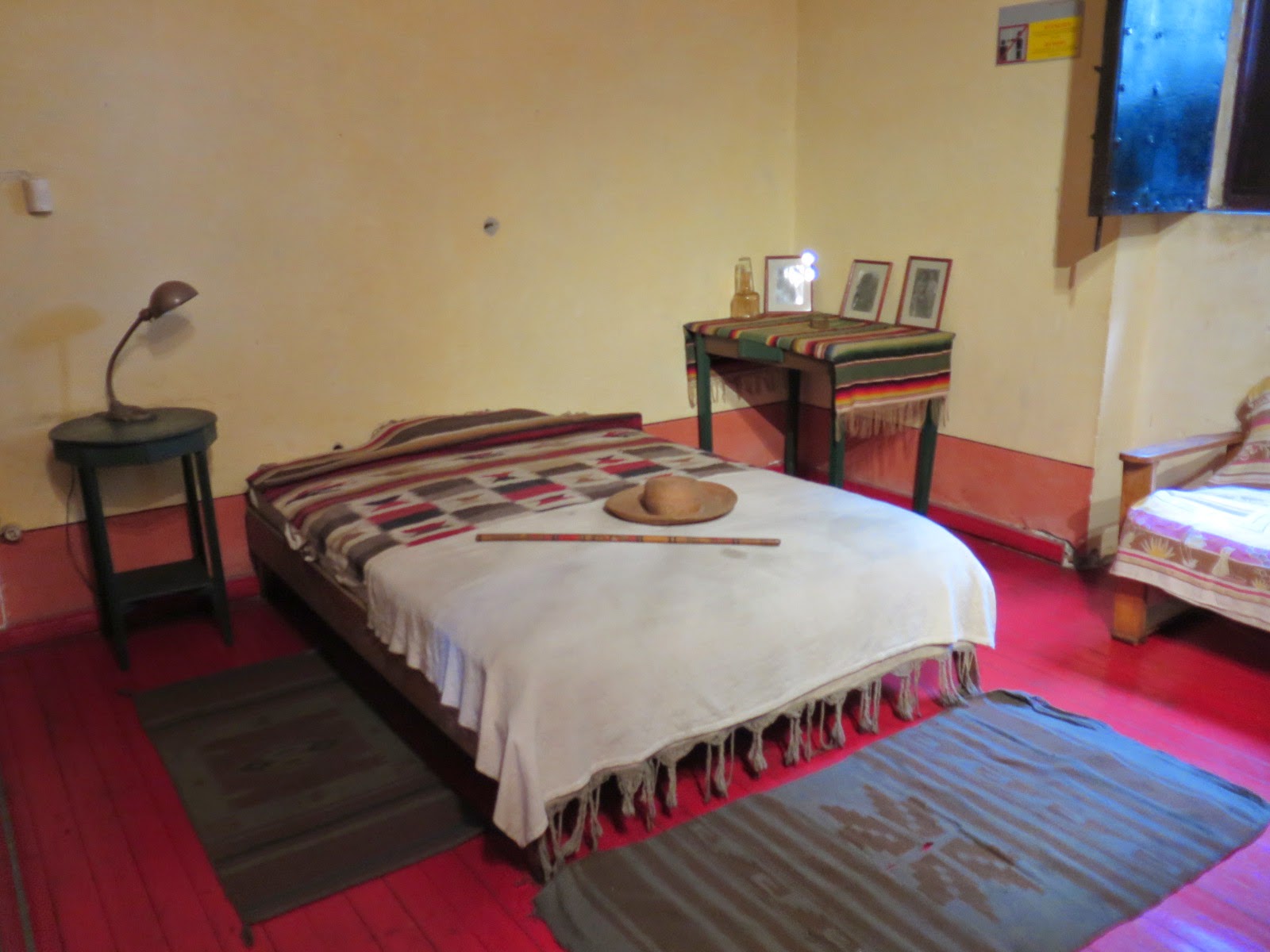



































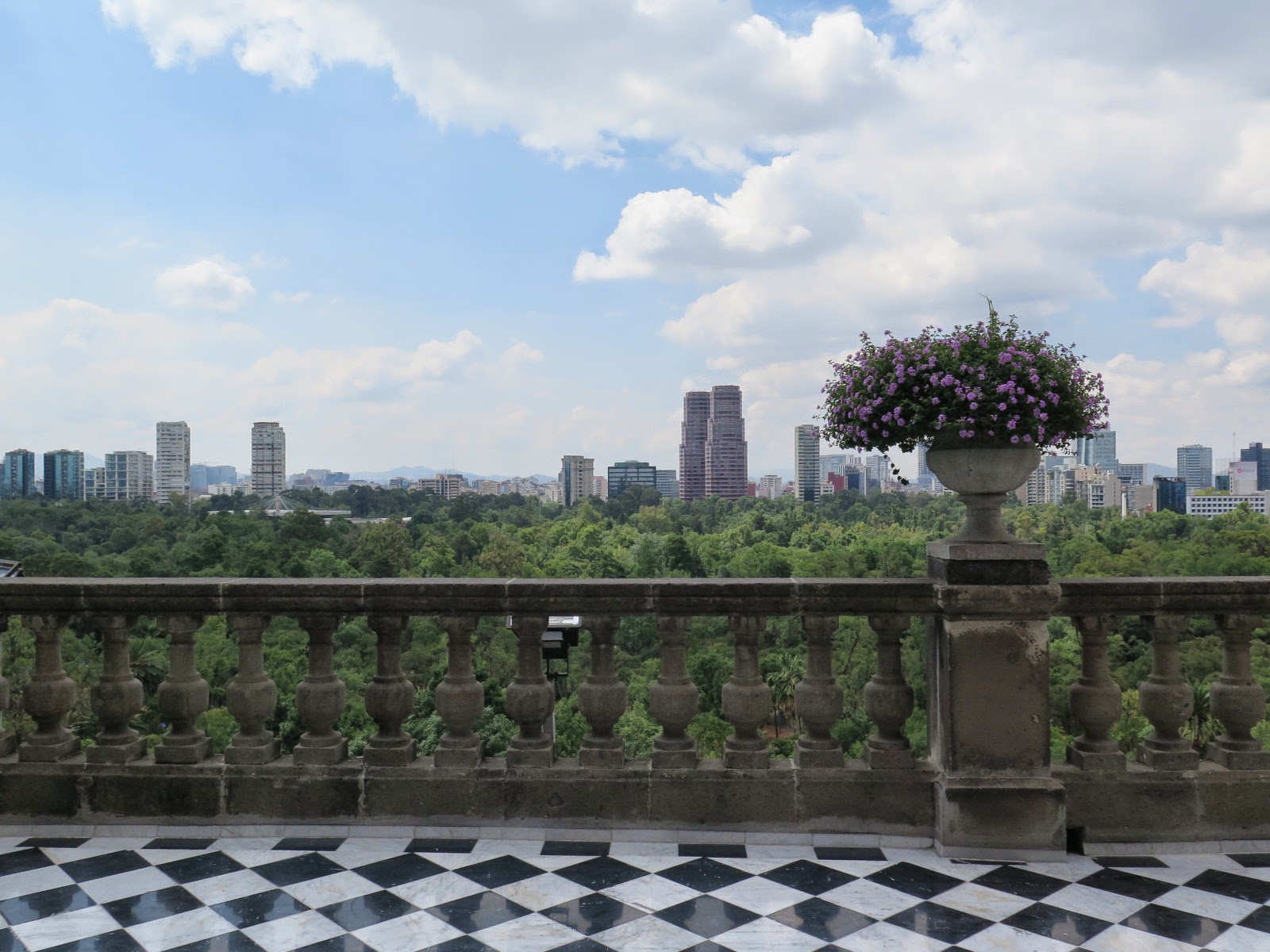


























































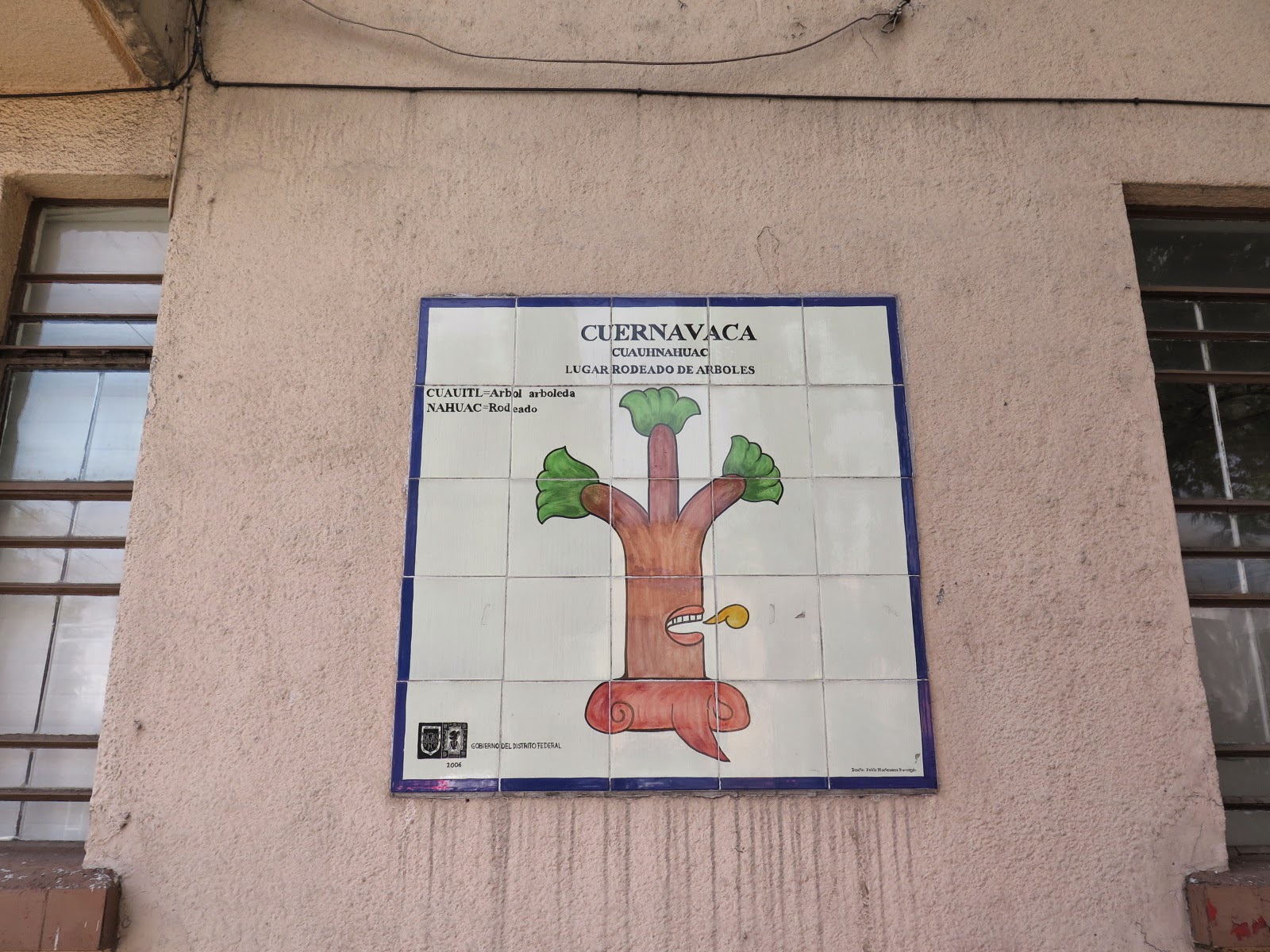










































































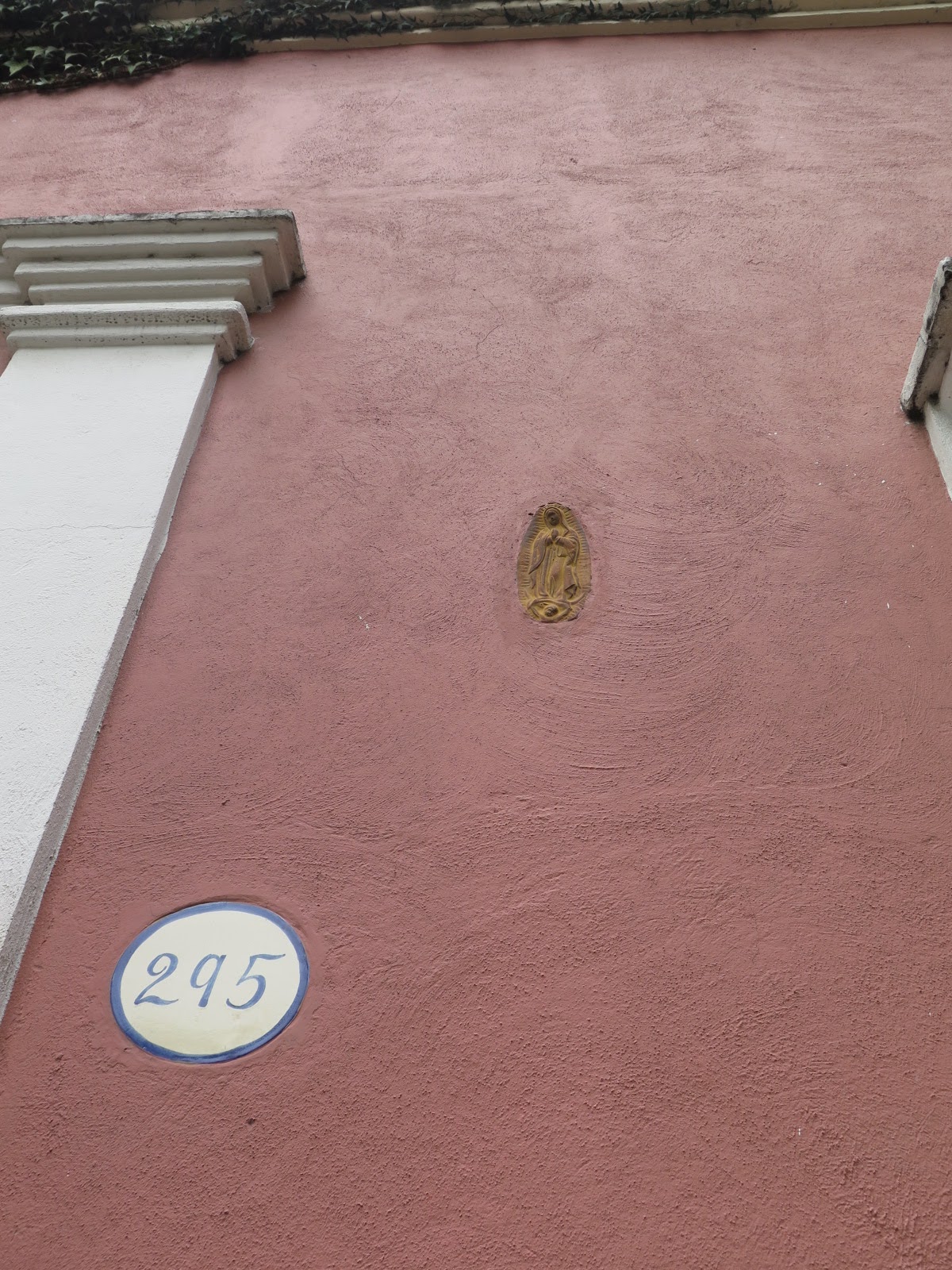









Great Photos! It looks a very colourful place I would love to go there. X
ReplyDeleteYour photos of Chapultepec Castle reminded me of some of the features at Hearst Castle, the terrace, the tiles and the dining room especially.
ReplyDelete